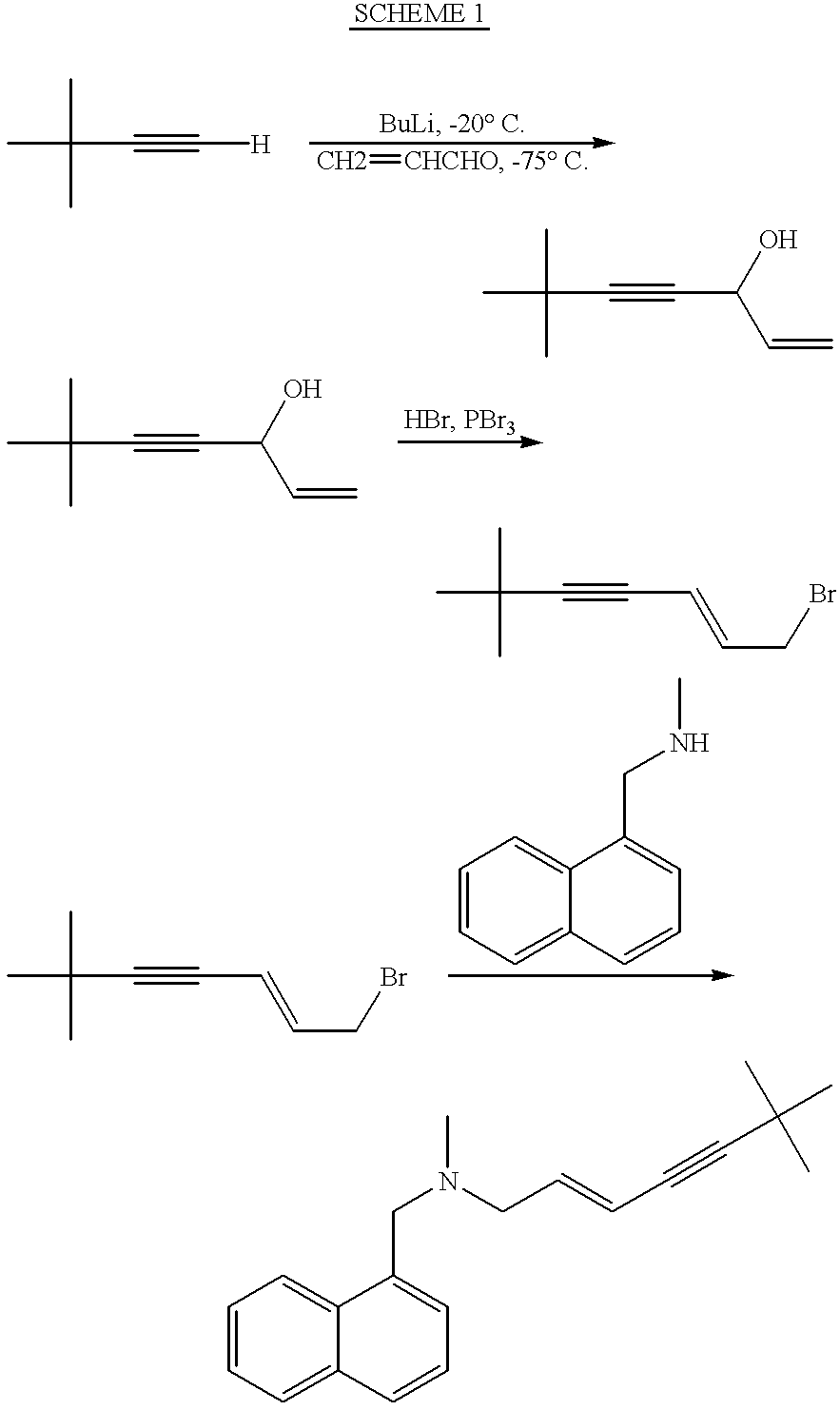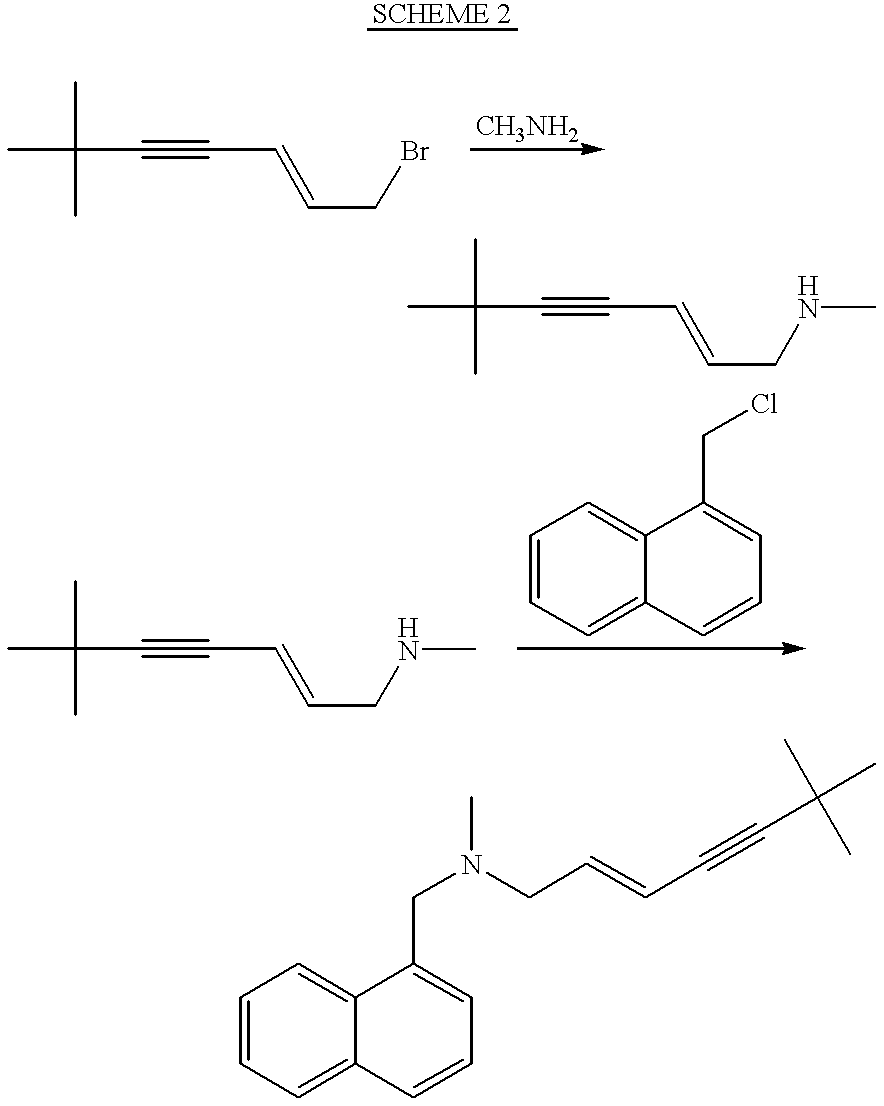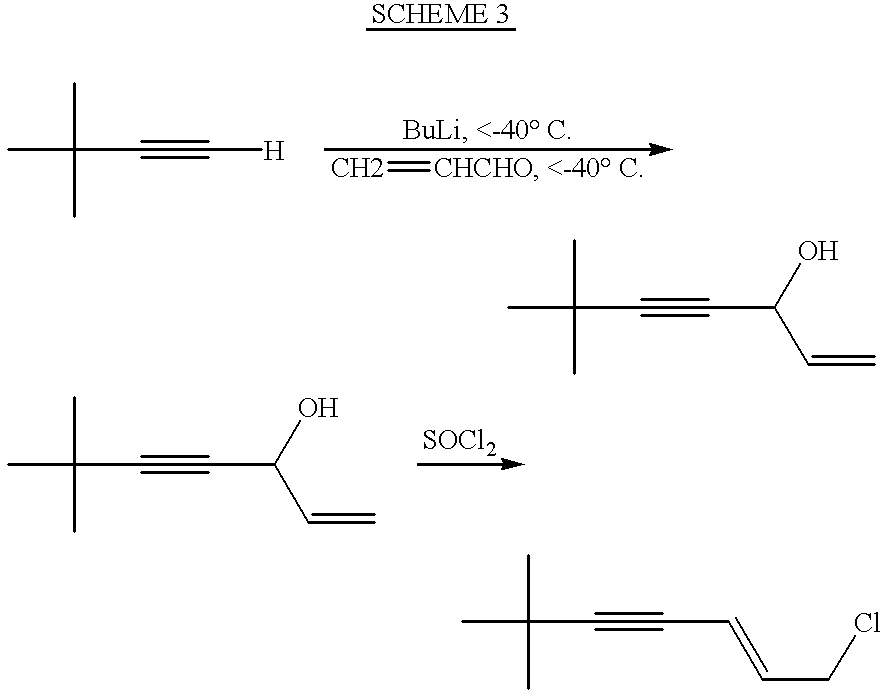Process for the preparation of 6,6-dimethylhept-1-en-4-yn-3-ol
a technology of dimethyl hept-1, en-4, yn-3, which is applied in the preparation of organic compounds, chemistry apparatus and processes, and can solve problems such as inability to consider desired ones, dangerous substances, and even worse situations
- Summary
- Abstract
- Description
- Claims
- Application Information
AI Technical Summary
Problems solved by technology
Method used
Image
Examples
example 2
The procedure outlined in example 1 was repeated using n-propyl bromide instead of ethyl bromide. 6,6-dimethylhept-1-en-4-yn-3-ol (14.9 gr.) of similar purity was obtained.
example 3
Butyllithium 1.6 M solution in hexane (106.2 ml, 0.17 mole) was added dropwise during 70 minutes to a mixture of t-butylacetylene (13.3 gr., 0.162 mole) and tetrahydrofuran (133.1 ml) at 0.degree. C. A solution of freshly distilled acrolein (10 gr., 0.17 mole) in tetrahydrofuran (26.6 ml) was added to the reaction mixture at 0.degree. C. during 45 minutes. The reaction mixture was stirred at 0.degree. C. for 40 minutes. It was further stirred for 18 hours at room temperature. Saturated ammonium chloride solution (45 ml) was added. The reaction mixture was brought to pH 6 using 10% sulfuric acid (about 85 ml). Tetrahydrofuran was evaporated under reduced pressure. The residue was extracted by dichloromethane. The organic phase was washed with water and dried. The dichloromehane was removed to give the crude product (20.1 gr., 90% yield). Pure 6,6-dimethylhept-1-en-4-yn-3-ol was obtained by distillation. Boiling point was 83.degree. C. at 24 mbar. 13.5 gr. were obtained (60.6% yield)....
example 4
Under a blanket of dry nitrogen, at 0.degree. C., metallic lithium (0.667 gr., 0.096 mole) was added to a mixture of t-butylacetylene (9.94 gr., 0.121 mole) and tetrahydrofuran (75 ml). The mixture was heated to 40.degree. C. for 5 hours and kept at room temperature for 24 hours. The lithium was almost completely consumed. A second amount of t-butylacetylene (9.94 gr., 0.121 mole) was added and the reaction mixture was stirred for 21 hours. The mixture was cooled to 0.degree. C. and a solution of freshly distilled acrolein (6.634 gr., 0.118 mole) in tetrahydrofuran (10 ml) was added gradually during 30 minutes. The mixture was stirred at 0.degree. C. for 30 minutes and then at room temperature for 3 hours. Isopropanol (6 ml) was added to quench the remaining lithium. The mixture was quenched using saturated ammonium chloride aqueous solution (30 ml) at 0.degree. C. The pH was brought to 6 by 10% sulfuric acid (ca. 45 ml). The tetrahydrofuran and excess t-butylacetylene were evaporat...
PUM
| Property | Measurement | Unit |
|---|---|---|
| temperatures | aaaaa | aaaaa |
| temperature | aaaaa | aaaaa |
| temperature | aaaaa | aaaaa |
Abstract
Description
Claims
Application Information
 Login to View More
Login to View More - R&D
- Intellectual Property
- Life Sciences
- Materials
- Tech Scout
- Unparalleled Data Quality
- Higher Quality Content
- 60% Fewer Hallucinations
Browse by: Latest US Patents, China's latest patents, Technical Efficacy Thesaurus, Application Domain, Technology Topic, Popular Technical Reports.
© 2025 PatSnap. All rights reserved.Legal|Privacy policy|Modern Slavery Act Transparency Statement|Sitemap|About US| Contact US: help@patsnap.com



